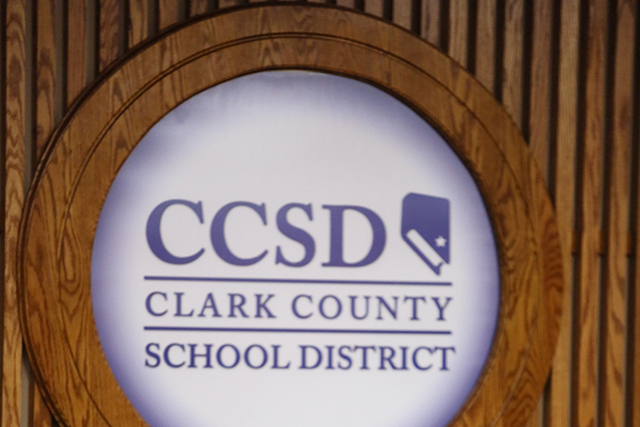Clark County zoom schools lag in state rankings

Among the most highly scrutinized Clark County School District star ratings were for a handful of “zoom” schools, which have completed their first year of a $39.4 million experiment to revitalize struggling campuses.
But not one of the 14 zoom schools improved their standings, according to the Nevada Department of Education’s rating system, updated Friday with 2013-14 information. The ratings award one to five stars based mainly on academic performance. Four of the zoom schools were downgraded, each losing a star to become a one- or two-star school.
Nevada lawmakers granted the extra funding in 2013-14 with one purpose: Boost the performances of Nevada’s schools with the most English language-learning students and the worst academic results.
However, no one seemed disappointed by the lackluster results released Friday.
From Clark County Superintendent Pat Skorkowsky to zoom school principals and state Sen. Joyce Woodhouse, chairwoman of the Legislative Committee on Education, all assert the flat or fallen star ratings don’t reflect failure. In fact, they claim, the state ranking and the additional state funding are unrelated.
“I’m feeling very positive about the zoom schools,” Skorkowsky said. Zoom school ratings range from one to three stars.
But school ratings rely heavily on the Criterion Referenced Test, Nevada’s annual assessments in math and reading given to every student in third to eighth grade.
Clark County’s zoom schools are all elementaries: Cambeiro, Cortez, Craig, Detwiler, Diaz, Herron, Lunt, Martinez, Paradise, Petersen, Ronzone, Tate, Warren and Tom Williams. Their ratings are based on the test scores of third through fifth-graders.
Zoom efforts, however, target pre-kindergarten through second-grade, said Warren Elementary School Principal Jonathan Herring. The rationale is that students must be proficient readers by third grade, the crucial turning point where research has shown students shifting from learning to read, to reading to learn.
The zoom program removed caps on pre-kindergarten enrollments, restricted kindergarten classes to 21 students each, opened reading centers and extended the school year by 17 days.
Warren fell from a rating of three stars in 2012-13 to two stars in 2013-14.
“We’re disappointed a little bit,” Principal Herring said.
But he sees the effect — not calculated into the school’s star rating — that zoom programs have had on his students.
Previously, less than a third of Warren kindergartners exited with skills sufficient for first grade, he said. That jumped to 95 percent in 2013-14.
With expanded pre-kindergarten partially funded by the zoom school money, Warren enrolled 76 students in 2013-14 compared to 40 students in 2012-13. All 76 of these students were ready for kindergarten by the summer break, he said.
The only direct effect that zoom funding had on Warren’s star rating was the reading center, created as a campus for students behind a grade level or more in their reading skills. Students stay there until they’ve caught up. Warren sent 35 third-graders there. These students participate in state tests.
Of those 35 students, 21 students returned to their regular third-grade class by the end of the school year, reading at grade level, he said. The effect on state tests: Warren’s percentage of skilled third-grade readers doubled from 14 percent to 37 percent.
But zoom’s effect on Warren’s star rating remains meager, he emphasized.
“Hopefully, legislators will realize that,” said Herring, well aware lawmakers are considering whether to extend the zoom program and expand it to more schools. The current zoom schools are funded through the end of 2014-15.
Sen. Woodhouse, D-Henderson, said it was “very clear during the legislative session” that lawmakers were funding early education. The effect of zoom funding won’t show until schools’ 2017-18 ratings, when zoom students make it to upper elementary school grades.
“It’s a long road,” Woodhouse said.
Lawmakers, however, required results reporting. So, the district used an evaluation tool called Teaching Strategies GOLD, setting 38 objectives for pre-kindergarten students in language and literacy.
At the beginning of the school year, a little more than 10 percent of zoom schools’ pre-kindergarten students had the expected language skills. About 35 percent had the basic literacy skills. By the end of the year, about 85 percent met language objectives, and almost 100 percent met literacy objectives.
More than 70 percent of zoom-school kindergartners showed the “essential skills” expected for entry into first grade. The reading centers targeted 1,200 students in first through third grade who struggled to read. About 40 percent, or 475 of these students had caught up in reading by the end of the school year.
Database Editor Brian Haynes contributed to this report. Contact Trevon Milliard at tmilliard@reviewjournal.com or 702-383-0279. Find him on Twitter: @TrevonMilliard.


















